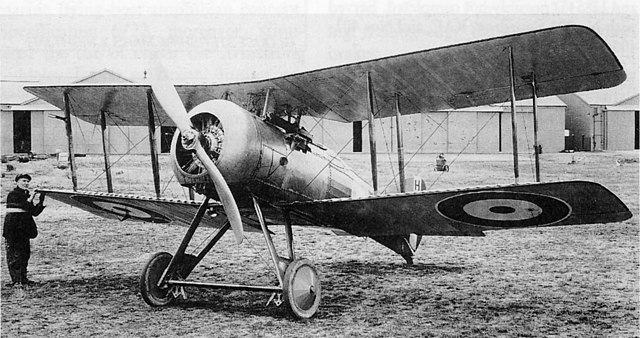The Bentley B.R.2 was a nine-cylinder British rotary aircraft engine developed during the First World War by the motor car engine designer W. O. Bentley from his earlier Bentley BR.1. The BR.2 was built in small numbers during the war, its main use being by the Royal Air Force in the early 1920s.
Bentley BR2
Gloster Nightjar during evaluation at Farnborough in 1922
Manufacturer's plate (dated November 1917) and valve operating gear of the BR.2 engine on display at the Royal Air Force Museum Cosford
The rotary engine is an early type of internal combustion engine, usually designed with an odd number of cylinders per row in a radial configuration. The engine's crankshaft remained stationary in operation, while the entire crankcase and its attached cylinders rotated around it as a unit. Its main application was in aviation, although it also saw use in a few early motorcycles and automobiles.
An 80 horsepower (60 kW) rated Le Rhône 9C, a typical rotary engine of WWI. The copper pipes carry the fuel-air mixture from the crankcase to the cylinder heads acting collectively as an intake manifold.
This Le Rhône 9C installed on a Sopwith Pup fighter aircraft at the Fleet Air Arm Museum. Note the narrowness of the mounting pedestal to the fixed crankshaft (2013), and the size of the engine
Megola motorcycle with rotary engine mounted in the front wheel
An 1897 Félix Millet motorcycle







